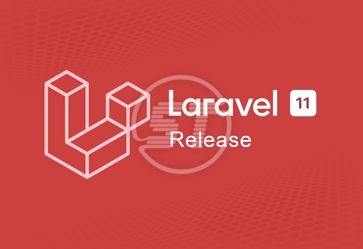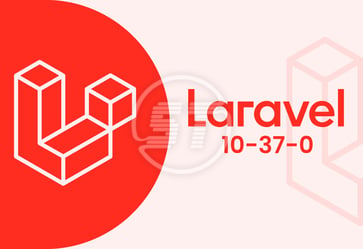Laravel is one of the most popular and powerful PHP frameworks and it has become a developers’ paradise as it facilitates clean and debuggable code. Even the hardest of the features can be implemented by the developers easily using Laravel. Ever since it was rolled out, it has made the web development process a breeze and less painful. It is a free and open-source PHP web development framework that is known for its simplicity, credibility, and high security. It is one of the easiest web application development frameworks and has got some amazing features.
If you want to make create efficient web solutions, focus on the following things for Laravel web development.
Here are some of the Dos of Laravel Development
Use the latest Laravel version
Always go for the latest Laravel version. Whenever you start your application, make sure to go for the current stable version. This assures you a stable, secure, and high-performance web solution. Currently, Laravel 8 is the latest version and you can go for it when you start developing your web solutions using Laravel.
Use resource controllers for CRUD operations
Resource controllers may seem to involve a lot of work and come out as a bad idea to use. But in reality, they are the ones that can ease the development process. For some of the most common and frequently used applications like create, update, delete, and read, you can go for Laravel resource controllers.
Use Events where the logic is not relevant to features
If your logic is directly correlated with your controller, you can have it in a separate class. In Laravel, this can be implemented as events. For instance, when a user signs up, you may want to send an automated welcome email. This can be achieved and fulfilled by writing the user creation logic inside the controller that can trigger the event and handle the logic automatically.
Go for middleware for any route logic
If you are thinking of writing the route-related logic inside the routes/web.php or the controller, we recommend you one of the safest ways is to create a middleware for the same. You can register the middleware and ensure that the logic related to it will run before the controller is reached.
Use Seeders and factories
If you have to populate tests or development data in the database, always use database seeders. This way you can gain control over which data can be used during testing generates data using a single command and creates easily reproducible tests.
Extract components from blade views
One can have out-of-the-box components using Laravel that help in avoiding code repetitions. For instance, let's say the header and footer on each HTML page. They would remain constant and hence you can simply create one component for the same and reuse it in every file.
Use local scopes to query
If your Laravel project demands writing queries repeatedly, then query scopes might be of help. It is an efficient way of adding database logic and you can extract them from the model and reuse them in the model.
Hire our Laravel developers who are technically skilled and have the expertise to handle multidisciplinary and multi-technology projects of all sizes.
Here are the don’ts for Laravel Development
No DB logic in view or controller
There can be times when you may have to go for a complicated DB logic. And Laravel which is an MVC framework can offer you very few out-of-the-box options. In that case, it can be tempting for you to take the easiest route of including the database logic in the view or controller. Remember the database logic is only for describing the database and nothing more. Find some creative ways around here like going for the repository and service.
Using a controller for more than one feature
Create controllers for specific purposes and ensure that you use each controller per feature. In some cases, you may also have to think of each model having one corresponding controller. One of the biggest benefits of the controllers is that they are very thin, make debugging simpler, eases maintenance, and refactoring at the later stages.
Don’t use Auth facade in the controller constructor
In Laravel, all the controllers are resolved even before the user is derived from the session. Generally, a session middleware adds the current user session to the auth object which is available inside the Auth facade, auth () helper, and request () objects are run after all the controllers have been resolved from the service container. So, the results will always be null if you try to access the auth object in the controller constructor.
Don’t directly touch the database.
The core principle of Laravel is not to manipulate the database directly. Always use database migrations for that purpose. Whether you need to make any updates or schema changes, you can always rely on migrations. This eases the purpose of deployment and you can anytime reset the database to the previous state without any hassles.
Don’t add validation logic inside controller form requests
If you are building simple applications, you can write the validation logic inside the controller. But in case, if you are scaling your applications, and adding more features to them, it may become difficult for maintaining and refactoring the code. So do not write any sort of validation logic inside the controller user form requests.
Don’t update the minor issues
Usually, PHP platforms including Laravel have issues regarding the new versions. This is in fact a critique factor when it comes to Laravel web application development. There have been continuity issues when it comes to upgrading the framework version. It has become troublesome and always requires highly skilled Laravel developers. The upgrade may also add some complications and the whole system may stop working.
Do not go every plugin
There is a plethora of plugins that make the development process easier. It becomes tempting to use these plugins for additional functionality. But hold on, show extra care and caution before you make use of abundant plugins for creating web solutions. Too many plugins may take down the performance of your website.
Conclusion
To conclude, we would recommend you to make the best use of this amazing framework that works incredibly well fulfilling all your requirements with its interesting features. You can kickstart your web application by opting for this most popular PHP framework. Even if it's new to you, you can gain the skill and code better over time. You can also rely on an experienced Laravel developers to start building your web application.
Skynet Technologies is delivering world-class Laravel development services such as Laravel customization, enterprise solution, Restful App development and more suitable for small to large scale business across all the industries.


